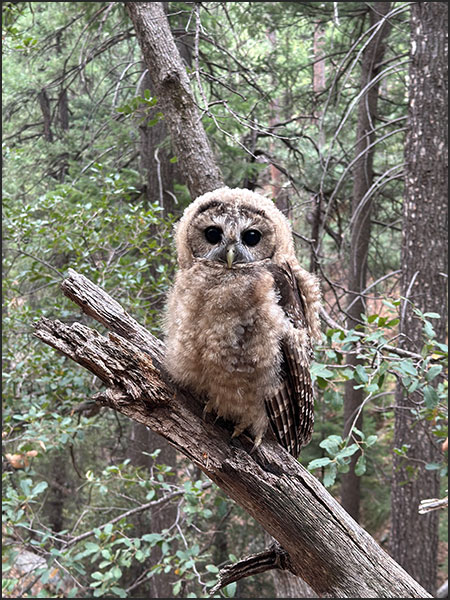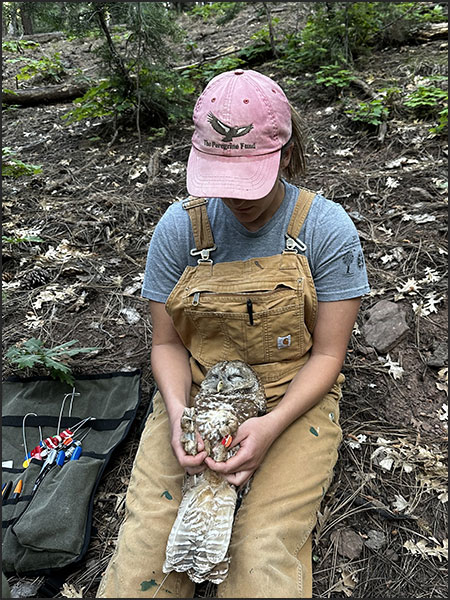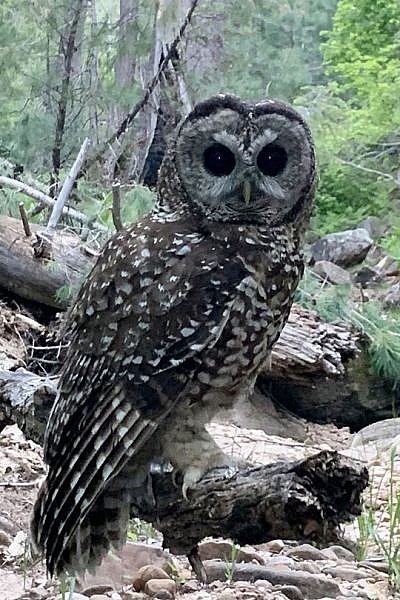
In 2023, Zoo members voted to fund GPS trackers that U.S. Fish & Wildlife and the USDA Forest Service are using to study Mexican spotted owls in New Mexico and Arizona.
They hope to learn what sort of habitat features Mexican spotted owls are using to nest, and what they are avoiding. The data collected will help them determine how best to protect the species and their habitat.
This is the first study to use GPS tags on Mexican spotted owls. The improved technology allows conservationists to collect high quality data – tracking owls’ locations every hour throughout the night for multiple months through the breeding season.
So far, they have GPS tagged 43 Mexican spotted owls in the study locations. They track data during the owls’ nesting season, collecting one to two months of data per bird.

Conservationists recently reported interesting results: a few of the tagged owls were using ’disturbed areas,’ which can include parts of the forest disturbed by timber cuts, fire and insect-related tree mortality. These initial findings could lead conservationists to believe that the owls may prefer mixed-use forest habitat – rather than needed pristine, untouched forests to thrive.
It seems that some of the owls actually prefer forests that are used by humans and animals. These are still very wild forests, but they are used responsibly for lumber, and they benefit from selective thinning for wildfire mitigation. If researchers conclude that owls prefer these sites, more of the forest could be mitigated against wildfires and used for sustainable lumber, while still supporting the owls. By tagging the owls, researchers know their current locations, and mitigation and lumber work could avoid their nesting habitats and seasons.

